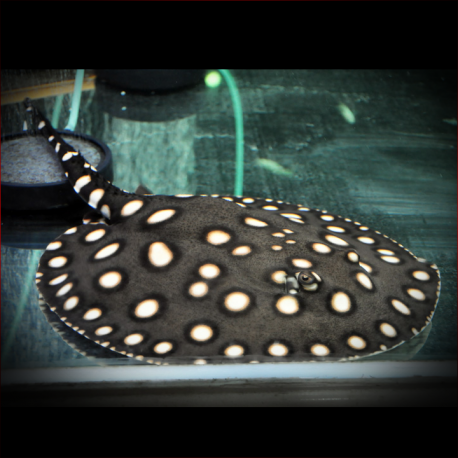More info
Datasheet
| Minimum Tank Size | 1700 litres / 449.09 US gallons |
| Maximum Size | 10.2cm / 4.02inches |
| Temperature | 23°C / 73.40°F - 28°C / 82.40°F |
| Hardness | 2-12ºdH |
| pH | 6.0-7.5 |
behaviour
Rays are considered top predators in their natural ecosystems, best kept with peaceful, large tankmates occupying upper tank levels to avoid aggression. Cichlids, characins, and cyprinids are suitable companions, but caution is advised with discus and Loricariids due to potential predation or territorial behavior. In a spacious tank, a mixed-species group of Potamotrygon can be maintained, although hybridization should be avoided for conservation reasons. Special attention is required when keeping "bat" or "batman" rays due to genetic defects affecting their disc shape.
feeding and diet
With a high metabolic rate, rays require frequent feedings of meaty foods like bloodworms, Tubifex, and mussels. Live foods may be necessary initially for newly imported rays, as they can be reluctant to accept frozen alternatives. Feeder fish and mammal meats should be avoided due to potential health risks. Rays are known to be big eaters, requiring a varied diet to maintain optimal health.
reproduction
Potamotrygon species exhibit matrotrophic viviparity, with gestation lasting 3-12 months in the wild. Captive breeding can lead to shorter gestation periods due to enhanced food availability. Selecting mating pairs requires patience and observation, with courtship behaviors sometimes being aggressive. Successful mating results in live births of fully-formed pups, requiring careful feeding and separation from adults to ensure survival.
sexual dimorphism
Males can be identified by the presence of claspers on the pelvic fins, used during mating. Juvenile males exhibit smaller claspers, but these become more prominent as the fish matures.
habitat and distribution
Found in the Rio Tocantins basin in Brazil, Potamotrygon Henlei thrives in various biotopes, including sand banks and flooded forests during wet seasons. They prefer slightly acidic water conditions and need spacious tanks with minimal decor to accommodate their active nature. Strong filtration and weekly water changes are essential for maintaining water quality and oxygen levels in the tank.

